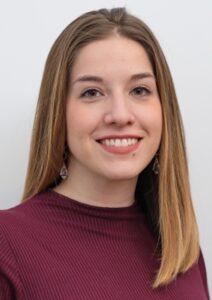Two organizations, the NAATP and Shatterproof, are at the forefront of creating digital platforms to measure the efficacy of treatment centers
By William Wagner
April 1, 2021It’s the black hole of addiction care—the vexing void. Talk to treatment experts for long enough, and you’ll inevitably reach the heart of the matter: They’re handicapped by the space’s lack of standardized data.
One expert puts it bluntly. “Big picture, addiction healthcare is not taken as seriously as the rest of healthcare—it’s not as respected,” says Annie Peters, Ph.D., LP, director of research and education for the National Association of Addiction Treatment Providers (NAATP). “We don’t have as much data. We don’t even have outcome measures that are standardized in a widespread manner. We don’t, at this time, know exactly how to see whether treatment ‘works.’”
How do people most often find addiction treatment? It’s through Google searches or advertisements or word of mouth. These pieces aren’t necessarily any indication of the quality of the treatment or how well a facility is aligned with clinical best practices.”—Shannon Biello, director of national treatment quality initiatives for Shatterproof
Part of the problem is historical in nature. “Addiction treatment was created by people in personal recovery who wanted to pass on what they had learned,” Peters says. “From the beginning, they weren’t interested in rigorous data collection and research; they just wanted to help each other. Obviously, we’ve come a long way from there, but addiction healthcare has kind of split into medical care or mental health care or AA. There are these different systems.”
Another issue is the slipperiness of the disease. Adds Peters, “Addiction is so complex [compared with some other medical conditions]. It doesn’t just affect physical health. It affects spiritual and emotional health, a person’s family and job. All of those things are hard to measure.”
But change is coming. The NAATP and the addiction nonprofit Shatterproof are two organizations ushering in long-awaited improvements in addiction treatment data. Their missions are a bit different—Shatterproof’s initiative is consumer-facing, while the NAATP’s is geared more toward its membership of approximately 1,000 providers—but both groups are aiming to take the guesswork out of addiction care.
Shatterproof’s ATLAS Platform

Google might be useful for finding a tasty sushi joint in your neighborhood, but not so much for locating quality addiction care. Unfortunately, people in need of treatment are relegated to internet searches and other blunt tools. To bring precision, quality and, ultimately, better outcomes to the process, Shatterproof is building out its Addiction Treatment Locator, Assessment, and Standards Platform (ATLAS).
“How do people most often find addiction treatment? It’s through Google searches or advertisements or word of mouth,” says Shannon Biello, MPH, director of national treatment quality initiatives for Shatterproof. “These pieces aren’t necessarily any indication of the quality of the treatment or how well a facility is aligned with clinical best practices. What Shatterproof saw as an important first step was distilling the most essential elements of addiction treatment that have been shown to improve patient health outcomes. There was a need for standardization for the public.”
Think of ATLAS as a sort of Yelp for addiction treatment. Launched in July 2020 in Delaware, Louisiana, Massachusetts, North Carolina, New York and West Virginia, ATLAS is designed for patients to rate treatment centers according to Shatterproof’s eight National Principles of Care, which were devised by a task force put together by the nonprofit:
- Routine screenings in every medical setting
- A personal plan for every patient
- Fast access to treatment
- Long-term disease management
- Coordinated care for every illness
- Behavioral health care from legitimate providers
- Medication-assisted treatment (MAT)
- Support for recovery beyond treatment
Biello was both relieved and joyful when the initial data from ATLAS flowed in. “That was a good day,” she says, because the platform was doing what Shatterproof had intended.
“After collecting the data from our pilot, we looked at it in collaboration with our analytics contractor at the time,” says Biello, who notes that ATLAS soon will expand to more states. “We were able to see from the first set of data the differences in the quality of care across addiction facilities that submitted data to us. We were able to determine that the quality measures we’re using are able to show which facilities are aligned with clinical best practices. That’s our goal: to get people information they didn’t have previously in order to improve outcomes.”
The NAATP’s FoRSE Platform

The NAATP’s work began in earnest with its Outcomes Pilot Program, a study to determine whether a “cross-provider” accumulation of data would be possible. The successful completion of that initiative in 2019 led to the 2020 formation of the Foundation for Recovery Science and Education (FoRSE). The wrinkle here is the ability to use an application programming interface (API) to merge information from different providers into a single repository.
“When we did a survey of our members, we realized everyone is using different electronic health records and different portals and systems to collect data from their patients,” says Peters, who’s heading up NAATP’s efforts. “Trying to suggest to our membership, ‘You have to use a certain health record or electronic tool to be able to do this work,’ was really not feasible. So we needed to figure out how to collect data from multiple different technology platforms. To do that, we use API, which is essentially just a digital highway that connects technologies together.
We want treatment programs to have data that helps them say, ‘These are areas we may need to improve.’ ”—Annie Peters, NAATP
“There are other vendors that sell a product to do outcomes measurements. But to get those services, you have to use their products. That’s what’s different about us. We’re trying to collect data from multiple technologies [and the service is free for NAATP members].”
Peters says the NAATP hopes to have 20 providers participating in FoRSE within a year, and then continue building from there. The objectives of FoRSE, as stated by the NAATP, are to:
- Launch critically needed evidence-based addiction treatment and recovery research
- Establish standardized measurements and reporting for addiction outcomes
- Develop a collective treatment database
- Increase treatment and recovery service data collaboration
- Inform quality improvement in addiction treatment
- Demonstrate the value of addiction treatment and multiple pathways to recovery
- Reveal return on investment for payers
- Improve productivity for addiction treatment and recovery support employers
- Revolutionize healthcare technology
- Improve the quality of life for people with addiction and their employers, families and friends
“The ultimate goal is twofold,” Peters says. “One is quality improvement. We want treatment programs to have data that helps them say, ‘These are areas we may need to improve.’ And the other is research. We’re not doing research per se to start, but after six months or so of collecting data, we would like to launch an official research study that we can publish in a peer-reviewed journal.”
Defining Treatment’s Future
Will ATLAS, FoRSE and other such data platforms succeed? To some extent, the future of addiction treatment depends on it.
“Projects like [these] are important because we need to demonstrate that people do get well from substance use disorders,” Peters says. “We need to show that people can completely transform their lives, and that treatment and long-term recovery support help them get and stay well. That’s really the reason we’re doing this.”
Top photo: Franki Chamaki













